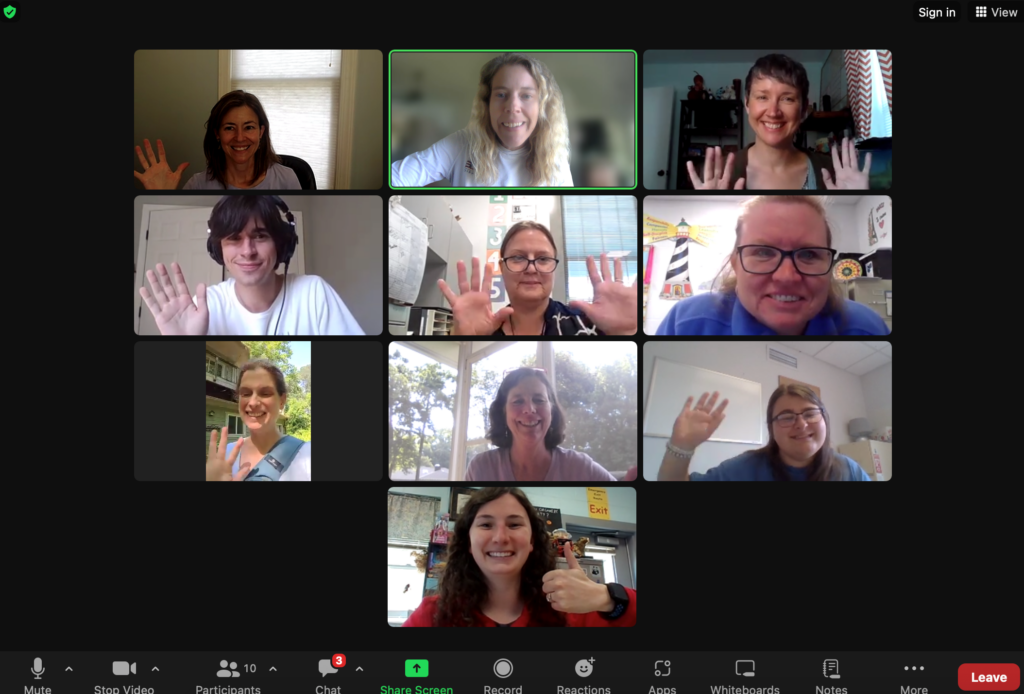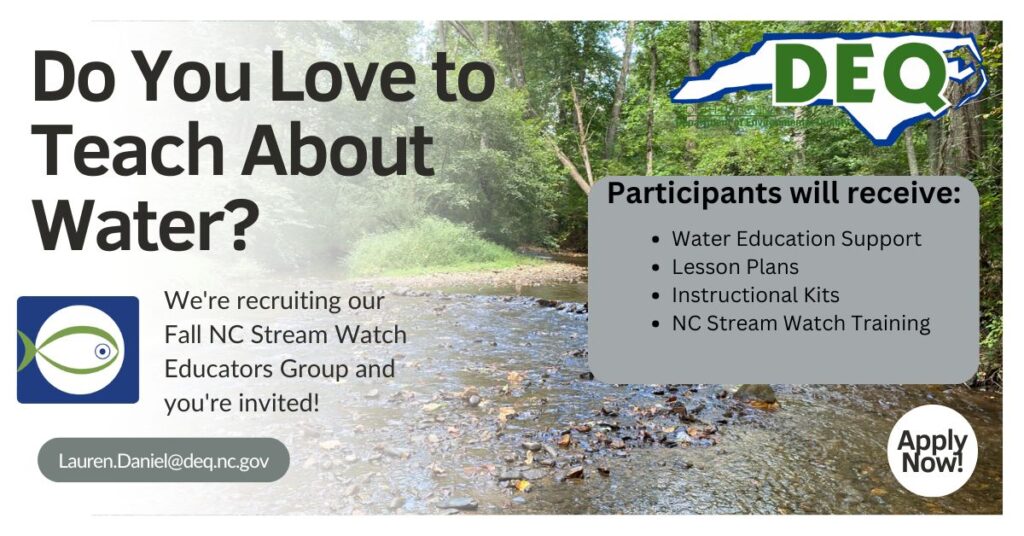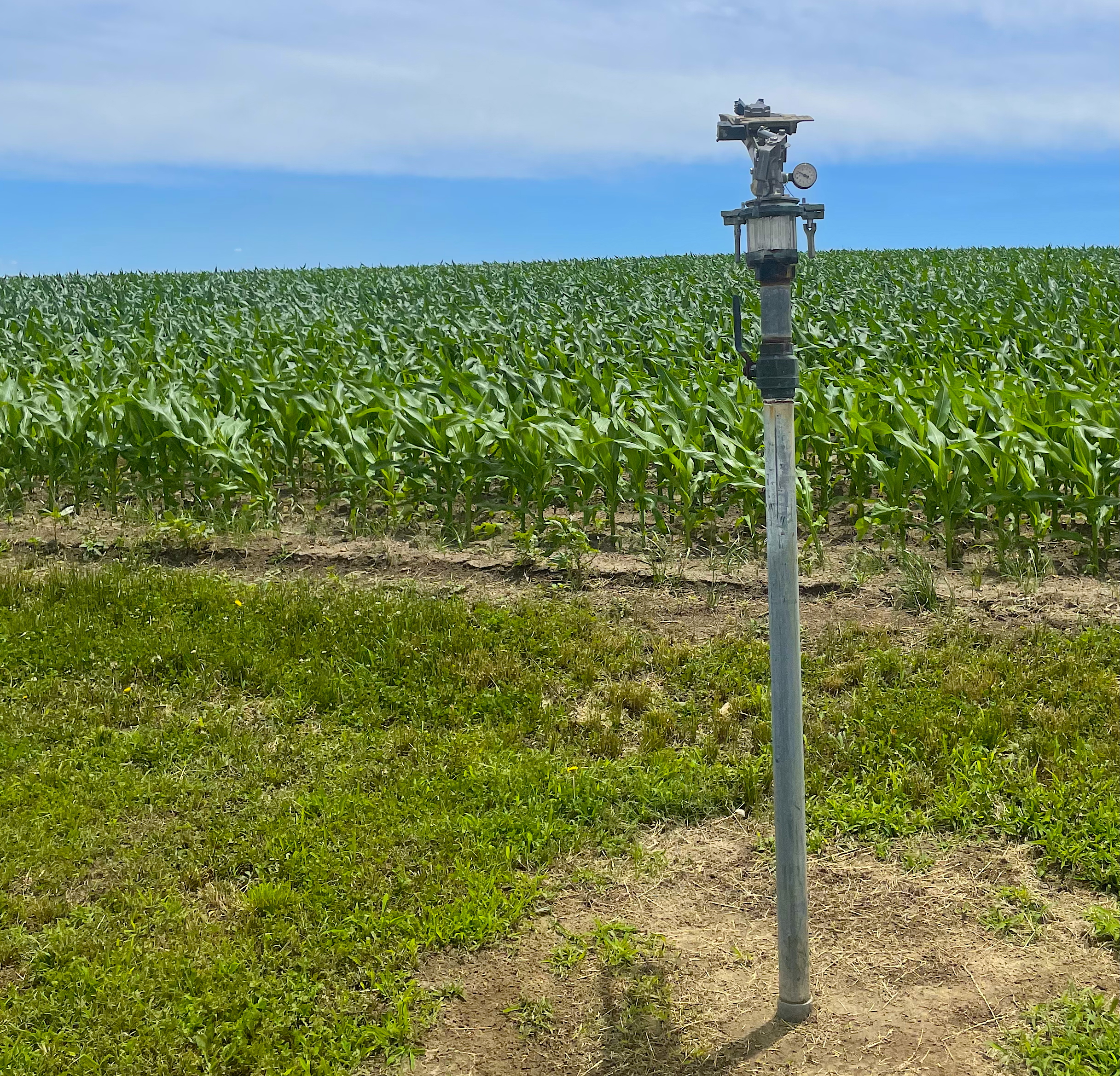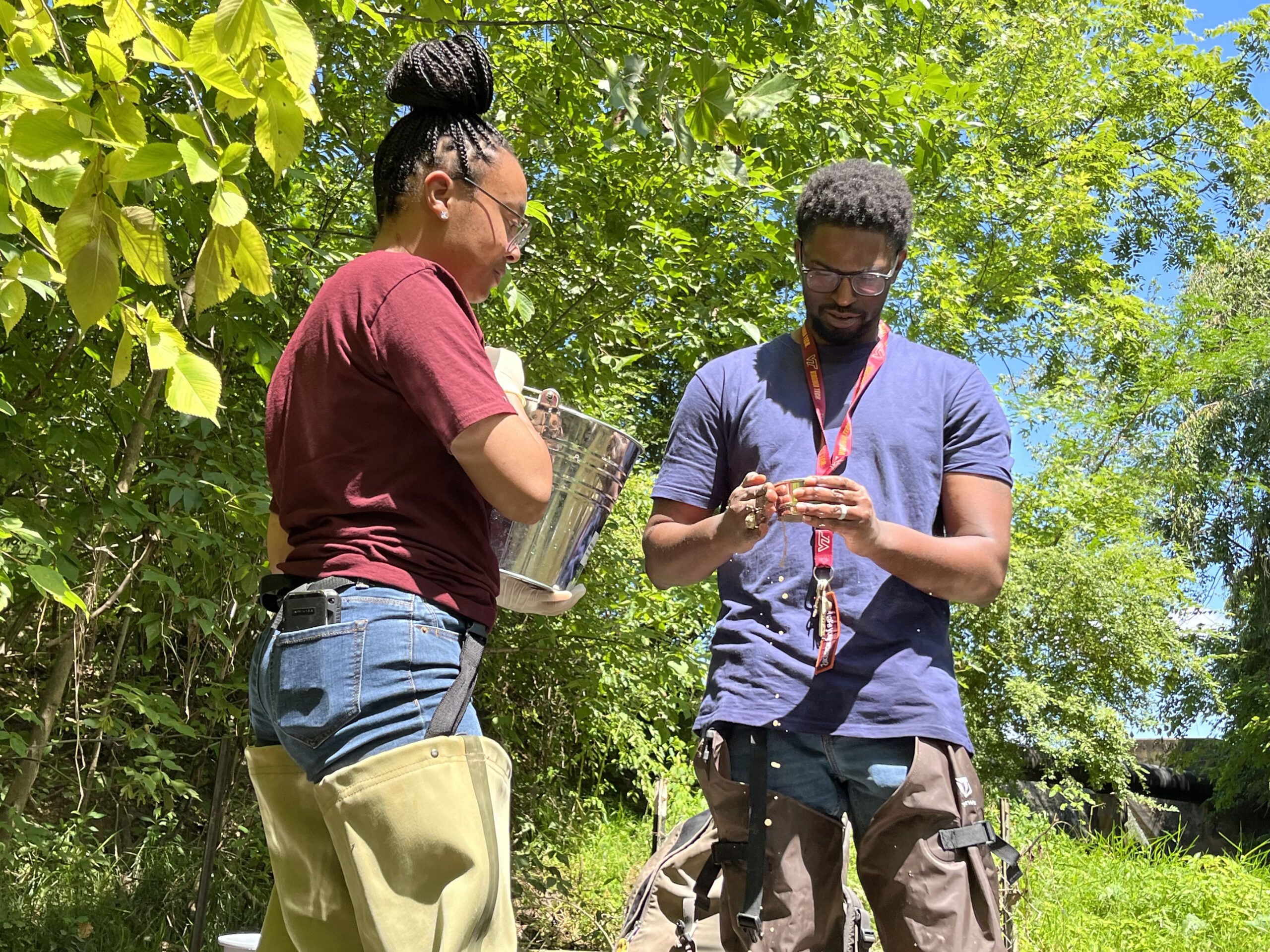
“We have goals to raise awareness about natural resource careers earlier, rather than waiting until people are in college — trying to spark those little nuggets of ‘this is a possibility’ early on.”
There’s little that children love more than a good outdoor adventure by the creek — splashing around in the water , absorbing the local atmosphere , and catching and observing small creatures. North Carolina Stream Watch fosters students’ natural curiosity by bringing these special moments to the classroom.
“For over 30 years, NC Stream Watch has sought to educate community members of all ages about the value of the water around them,” says Christy Perrin, sustainable waters and communities coordinator for North Carolina Sea Grant and NC Water Resources Research Institute.
The North Carolina Stream Watch Educators Cohort uses a hands-on approach to environmental literacy through engagement with water resources in the classroom. By providing a detailed curriculum — developed by experts at Environmental Educators of North Carolina, North Carolina Sea Grant, NC Water Resources Research Institute, and the NC Department of Environmental Quality — and training teachers across the state in a series of webinars, the program shows educators how to foster interest in the environment in students from kindergarten to eighth grade.

“By following up with one-on-one engagement with educators, we can support them in using our lesson plans in their classrooms, and actually improve upon the lesson plans as well,” says Perrin, one of the program collaborators. “It was a collaborative effort, and it really aligns with Sea Grant and the WRRI’s goals for environmental literacy.”
Perrin says adaptability to suit different ages and classroom environments is an important feature of Stream Watch’s lesson plans, honed for students in kindergarten to grade 2, grades 3 to 5, and grades 6 to 8.
“The lesson plans are divided up by grade level and whether they are indoor, outdoor, or streamside,” Perrin explains. “We tried to make the activities really hands-on and interactive, and for all ages. Depending on the amount of class time the educators want to use, they can do all indoor, outdoor, or streamside activities.”
Perrin says the lesson plans are unique in that they introduce educators to mindfulness — using nature as a way to ground students in the present.
“That’s a little challenging when you’re indoors,” she says. “So, we came up with a nature sounds activity that you can do inside or outside. Some students don’t have access to mindfulness activities like this in their day-today life, so this is an opportunity to introduce them in a small way.”

In Spring 2024, Stream Watch gathered 10 educators of different ages from across North Carolina to experiment with the new program. The program encouraged educators to provide feedback about how interacting with their colleagues impacted them, as well as how the lessons suited their teaching styles and engaged their students’ interest.
“I loved being in this class and talking to others that love being outside by a stream,” says Raelene Toomer, an elementary school teacher for Onslow County Schools. “The lessons were perfect for K-2, and the students loved learning about the stream.”
Courtenay Vass, an educator at the Greensboro Science Center, shared how much she enjoyed watching the lessons spark interest in her students. “Their laughter and excitement to show me what they found made my heart happy,” says Vass. “I believe anytime a child can connect with nature, their appreciation of nature and the world around them will continue to grow as they grow.”
Lauren Daniel, DEQ’s Water Education program coordinator and one of the core developers of Stream Watch, says the lesson plans and webinars not only have positively impacted students, but also the educators themselves.
“We all know our state’s teachers are underpaid,” she says, “but I also believe many of our teachers are under-supported, too. I want educators to feel connected to a bigger effort of environmental stewardship beyond their classroom walls. I want these educators to recognize the value of their roles in their communities.”
Perrin also hopes the program will have impacts beyond the classroom. “We have goals to raise awareness about natural resource careers earlier, rather than waiting until people are in college — trying to spark those little nuggets of this is a possibility early on. These activities help with that, too.”
Educators across the state can review the lesson plans and incorporate NC Stream Watch into their teaching.
MORE
Coastwatch Classroom K-12 lesson plans
Christy Perrin on student participation in building green infrastructure
Ruthie Froning is a contributing editor for Coastwatch and a graduate student in linguistics at NC State University.
- Categories:


